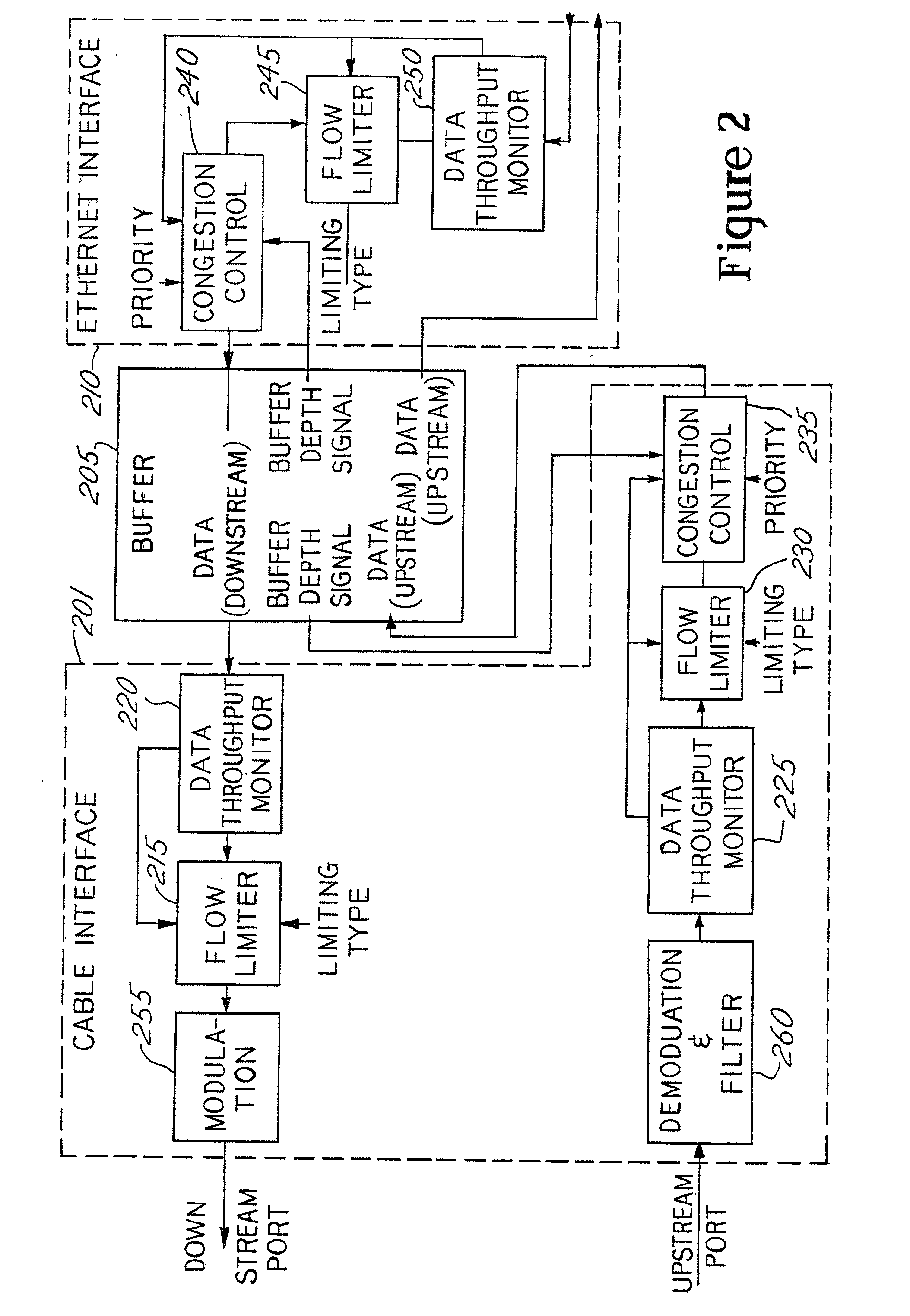Method and apparatus for controlling traffic loading on a cable modem termination system
a technology of cable modem and traffic loading, which is applied in the direction of two-way working systems, selective content distribution, television systems, etc., can solve the problems of incompatibility between low priority packets and other networks, different and more complex upstream data flow, and increased delay and jitter of low priority packets
- Summary
- Abstract
- Description
- Claims
- Application Information
AI Technical Summary
Benefits of technology
Problems solved by technology
Method used
Image
Examples
Embodiment Construction
[0021] According to one embodiment of the invention, a connection admission control system is used in a CMTS to provide congestion control. Connection admission control (CAC) systems are well known in the field of ATM networks. See e.g., U.S. Pat. No. 6,046,981, issued Apr. 4, 2000 to Ramamurthy, et al., for a "Multi-Class Connection Admission Control Method for Asynchronous Transfer Mode (ATM) Switches." See also U.S. Pat. No. 5,862,126 issued Jan. 19, 1999 to Shah et al., for "Connection Admission Control for ATM Networks" and see U.S. Pat. No. 5,894,471 to Miyagi, et al., for a "ATM Network System and Connection Admission Control Method."
[0022] CAC system use algorithms, which use traffic descriptors (e.g., peak rate, mean rate also referred to as average rate or sustainable bit rate and maximum burst size) along with the desired QoS parameters (e.g., cell loss, cell delay and cell delay variation) to access the amount of available bandwidth required by the connection. The decisi...
PUM
 Login to View More
Login to View More Abstract
Description
Claims
Application Information
 Login to View More
Login to View More - R&D
- Intellectual Property
- Life Sciences
- Materials
- Tech Scout
- Unparalleled Data Quality
- Higher Quality Content
- 60% Fewer Hallucinations
Browse by: Latest US Patents, China's latest patents, Technical Efficacy Thesaurus, Application Domain, Technology Topic, Popular Technical Reports.
© 2025 PatSnap. All rights reserved.Legal|Privacy policy|Modern Slavery Act Transparency Statement|Sitemap|About US| Contact US: help@patsnap.com



